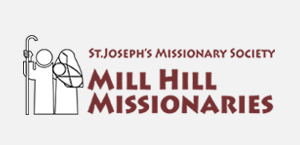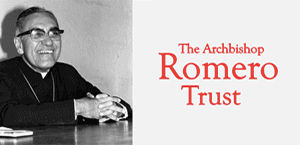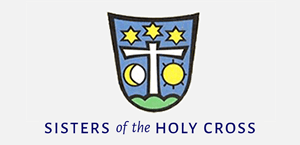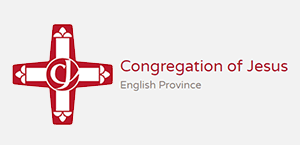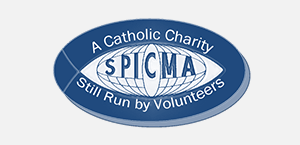Gospel in Art: Palm Sunday - The Passion of our Lord Jesus Christ according to Matthew
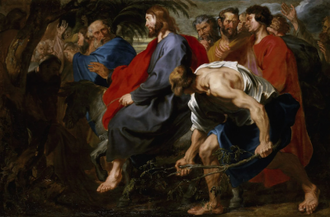
Entry of Christ into Jerusalem by Anthony van Dyck.1617 © Indianapolis Institute of Art
Source: Christian Art
Gospel of 2 April 2023
Matthew 27:11-54
Key: N. Narrator. J Jesus. O. Other single speaker. C. Crowd, or more than one speaker.
N. Jesus was brought before Pontius Pilate, the governor, and the governor put to him this question:
O. Are you the king of the Jews?
N. Jesus replied,
J It is you who say it.
N. But when he was accused by the chief priests and the elders he refused to answer at all. Pilate then said to him,
O. Do you not hear how many charges they have brought against you?
N. But to the governor's complete amazement, he offered no reply to any of the charges.
At festival time it was the governor's practice to release a prisoner for the people, anyone they chose. Now there was at that time a notorious prisoner whose name was Barabbas. So when the crowd gathered, Pilate said to them,
O. Which do you want me to release for you: Barabbas, or Jesus who is called Christ?
N. For Pilate knew it was out of jealousy that they had handed him over. Now as he was seated in the chair of judgement, his wife sent him a message,
O. Have nothing to do with that man; I have been upset all day by a dream I had about him.
N. The chief priests and the elders, however, had persuaded the crowd to demand the release of Barabbas and the execution of Jesus. So when the governor spoke and asked them,
O. Which of the two do you want me to release for you?
N. they said,
C. Barabbas.
N. Pilate said to them:
O. But in that case, what am I to do with Jesus who is called Christ?
N. They all said:
C. Let him be crucified!
N. Pilate asked:
O. Why? What harm has he done?
N. But they shouted all the louder,
C. Let him be crucified!
N. Then Pilate saw that he was making no impression, that in fact a riot was imminent. So he took some water, washed his hands in front of the crowd and said,
O. I am innocent of this man's blood. It is your concern.
N. And the people, to a man, shouted back,
C. His blood be on us and on our children!
N. Then he released Barabbas for them. He ordered Jesus to be first scourged and then handed over to be crucified.
The governor's soldiers took Jesus with them into the Praetorium and collected the whole cohort round him. Then they stripped him and made him wear a scarlet cloak, and having twisted some thorns into a crown they put this on his head and placed a reed in his right hand. To make fun of him they knelt to him saying,
C. Hail, king of the Jews!
N. And they spat on him and took the reed and struck him on the head with it. And when they had finished making fun of him, they took off the cloak and dressed him in his own clothes and led him away to crucify him.
On their way out, they came across a man from Cyrene, Simon by name, and enlisted him to carry his cross. When they had reached a place called Golgotha, that is, the place of the skull, they gave him wine to drink mixed with gall, which he tasted but refused to drink. When they had finished crucifying him they shared out his clothing by casting lots, and then sat down and stayed there keeping guard over him.
Above his head was placed the charge against him; it read: 'This is Jesus, the King of the Jews.' At the same time two robbers were crucified with him, one on the right and one on the left.
The passers-by jeered at him; they shook their heads and said,
C. So you would destroy the Temple and rebuild it in three days! Then save yourself! If you are God's son, come down from the cross!
N. The chief priests with the scribes and elders mocked him in the same way, saying:
C. He saved others; he cannot save himself. He is the king of Israel; let him come down from the cross now, and we will believe in him. He puts his trust in God; now let God rescue him if he wants him. For he did say, 'I am the son of God.'
N. Even the robbers who were crucified with him taunted him in the same way.
From the sixth hour there was darkness over all the land until the ninth hour. And about the ninth hour, Jesus cried out in a loud voice,
J. Eli, Eli, lama sabachthani?
N. That is, 'My God, my God, why have you deserted me?' When some of those who stood there heard this, they said,
C. The man is calling on Elijah.
N. and one of them quickly ran to get a sponge which he dipped in vinegar and, putting it on a reed, gave it him to drink. The rest of them said:
C. Wait! See if Elijah will come to save him.
N. But Jesus, again crying out in a loud voice, yielded up his spirit.
Here all kneel and pause for a short time.
N. At that, the veil of the Temple was torn in two from top to bottom; the earth quaked; the rocks were split; the tombs opened and the bodies of many holy men rose from the dead, and these, after his resurrection, came out of the tombs, entered the Holy City and appeared to a number of people. Meanwhile the centurion, together with the others guarding Jesus, had seen the earthquake and all that was taking place, and they were terrified and said,
C. In truth this was a son of God.
Reflection on the painting
We often hear or read in the papers that a 'week is a long time in politics'. Politicians who are in positions of responsibility at the beginning of a week can find themselves out of a job by the end of the same week. A week can be bring lots of changes in any of our lives. The situation that we find ourselves in today may be very different this time next week. It is hard to conceive of a greater example of this than the difference between the beginning and the end of Jesus' final week. Today the crowds welcomed Jesus into Jerusalem with great enthusiasm; this time next week he will have been condemned, crucified and resurrected.
Therefore we approach the intensity and fast paced events of Holy Week with reverence because we know that the last journey of Christ was one that he undertook for all of us. We cannot be mere spectators of the events of Holy Week. We are called to be active participators in this story every year.
In 1618, Peter Paul Rubens referred to the young Anthony van Dyck as "the best of my pupils." Our painting by Van Dyck, which may have been created as early as 1617, when the artist was only 18 years old, provides a clear demonstration of his unique talent. At the age of eighteen he already displayed his master's theatrical, epic Baroque style. The movement in the painting is tangible; the muscular figure who stoops to cast a branch in Christ's path is virtuously painted. We feel the crowds are excited and restless. An oversized Jesus (compared to the donkey he sits on), is wearing a purple garment, but already wrapped in a red cloak too.
A most blessed Holy Week to you and yours,
Patrick
LINKS
Gospel in Art: https://christian.art/
Today's reflection: https://christian.art/daily-gospel-reading/matthew-27-11-54-2023/











